As strange as it may sound, my dad always says he grew up eating “polenta e latte” (polenta and milk). In the morning, he would break a slice of hardened polenta into his bowl of warm milk and call it a breakfast. Although I never had the pleasure to try it, my mom confirms it’s delicious!
WHAT’S POLENTA, ANYWAY?
Cheap and filling, polenta is the quintessential peasant food of Northern Italy; it’s coarsely ground cornmeal cooked in water for a long time. Polenta is very versatile. Do you remember that Forrest Gump’s scene where Bubba goes on and on about shrimp? Well, I could go on and on about all the different ways to eat polenta! It can be yellow, white or dark (polenta taragna, a blend of buckweat flour and cornmeal). When soft, it’s the perfect companion for stews or any dish that includes a little sauce. When hard, it turns into a loaf that can be easily sliced and then pan-seared, grilled or fried. Here are just a few examples of how people in Friuli and Veneto like to eat it: polenta with sauteed mushrooms, polenta with melted cheese, polenta with grilled meat, polenta e baccala’ (salt cod), polenta con polastro in tecia (stewed chicken), polenta e spezzatino (beef stew), polenta e osei (birds!), polenta with eggs, polenta with salami cooked in vinegar, polenta with fried sardines…and the list goes on and on!
HOW YOU SHOULD COOK IT
Polenta should be cooked on low heat for a fairly long time — about 45 minutes. This long simmering is important! Each grain of cornmeal must slowly absorb the water until it swells and becomes perfectly tender, almost disappearing within the whole. You must be patient and devote a bit of attention to the pot, frequently (not constantly) stirring to avoid sticking and burning. While many people in Friuli cook it in a specific copper pot, called paiolo, over a wood fire stove, my mom cooks it in a more modern self-stirring pot. If you have neither, do not fret; all you need is a thick-bottomed pot! Once the polenta is ready, it should be immediately poured onto a round-shaped board to let it cool. Both of my grandmas would cut it using a cotton thread — the first cut would be a cross, as a sign of gratitude for having food on the table.
CREAMY POLENTA WITH GRANA PADANO CHEESE FONDUE
Now, let’s talk about my favorite most indulgent way to eat polenta: topped with a ladle of luxurious cheese fondue and a couple of tablespoons of cornmeal-infused browned butter (morchia). In Friuli, this dish is known as Toc’ in Braide, literally meaning “sauce in the small farm”. It’s absolutely delicious, comforting…and pretty substantial! For this reason, I prefer to eat it in a smaller portion (although this recipe yields 4 regular size servings). You can play with variations by adding whichever ingredients you prefer, like sautéed mushrooms or sliced truffle. The possibilities are endless when it comes to polenta, but frankly, I think this Creamy Polenta with Grana Padano Cheese Fondue is just perfect as is!
GOLDEN RULES FOR A PERFECT BASIC POLENTA
- It goes without saying, good-quality coarse-ground cornmeal will yield better results.
- The initial part is the most delicate one! Pour the cornmeal into boiling water in a slow, steady stream, while whisking to avoid lumps. Stir frequently (not constantly) with a wooden spoon throughout the cooking time.
- Cook on low heat and don’t shorten the cooking time. You need to allow the cornmeal to swell and become fully cooked.
- Halfway through the recipe, you may note the polenta is getting excessively firm and hard to stir. If that’s the case or you simply want to obtain a creamy polenta, you can adjust the texture by whisking in more warm water (watch out for lumps!).
- Use a thick-bottom wide pot, ideally not too tall, so you can have more control over mixing.
I hope you enjoy this recipe as much as I do! If you make this recipe, please tag me in your photo with @veryeatalian. Thanks!!
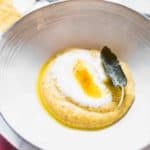
Creamy Polenta with Grana Padano Cheese Fondue
Hailing from Friuli, Northeastern Italy, this creamy polenta with Grana Padano cheese fondue and cornmeal-infused brown butter is comfort food at its finest! This recipe is adapted from Chef Andrea Berton.
Ingredients
- 270 g coarse-ground cornmeal for polenta (divided)
- 200 g Grana Padano (or Parmigiano Reggiano) cheese grated
- 150 g milk
- 150 g heavy whipping cream
- 150 g butter
- 125 g extra-virgin olive oil
- fried sage leaves as a garnish (optional)
Instructions
-
POLENTA: Bring to a boil 1 liter of water with 10 g of salt. Pour 250 g of polenta slowly into boiling water, whisking constantly until there are no lumps. Turn down the heat and keep mixing with a wooden spoon. Cook for about 40-45 minutes and mix frequently (not constantly) so it doesn’t stick to the bottom. While cooking, you may notice your polenta is too thick and dense: whisk in some warm water and mix very well to avoid lumps. Turn off the heat and mix in the extra-virgin olive oil. Your polenta should be creamy and smooth.
-
FONDUE: Bring to a boil milk and cream in a medium saucepan. Stir in the grated cheese and turn the heat to low. Using a handheld blender, blend until you obtain a smooth cream. Keep it warm on a double boiler, until ready to use.
-
CORNMEAL-INFUSED BROWN BUTTER: Brown the butter in a small saucepan and stir in 20 g of coarse-ground corn meal. Turn off the heat.
-
TRANSFER your polenta to your dish with a big spoon. Top it with a ladleful of fondue, and a drizzle of cornmeal-infused brown butter. Garnish with fried sage, if you like (I recommend it!).
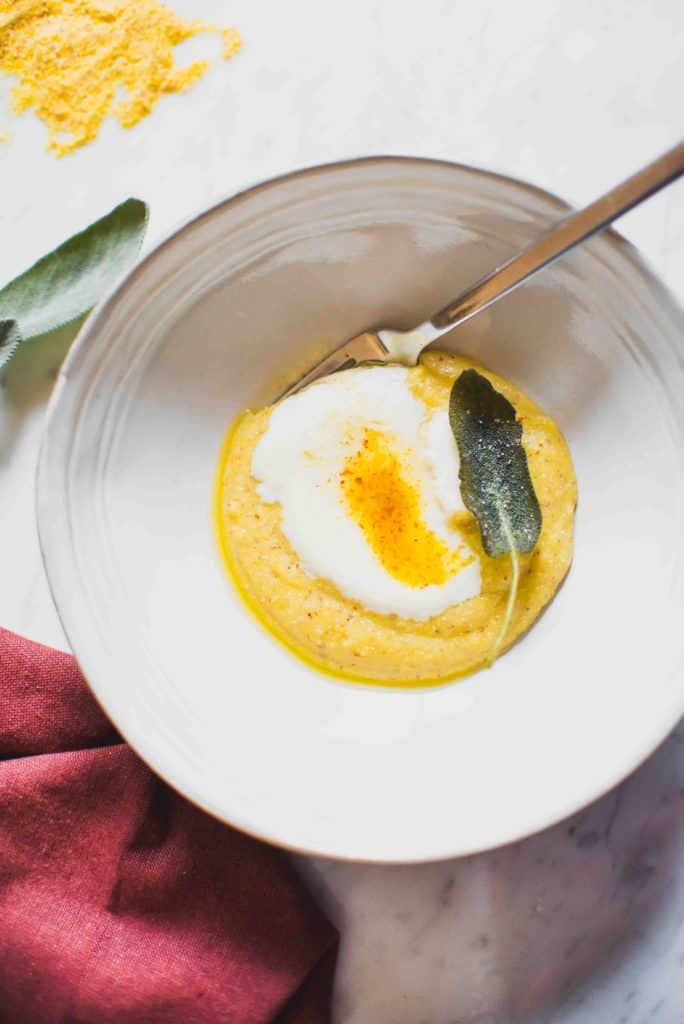
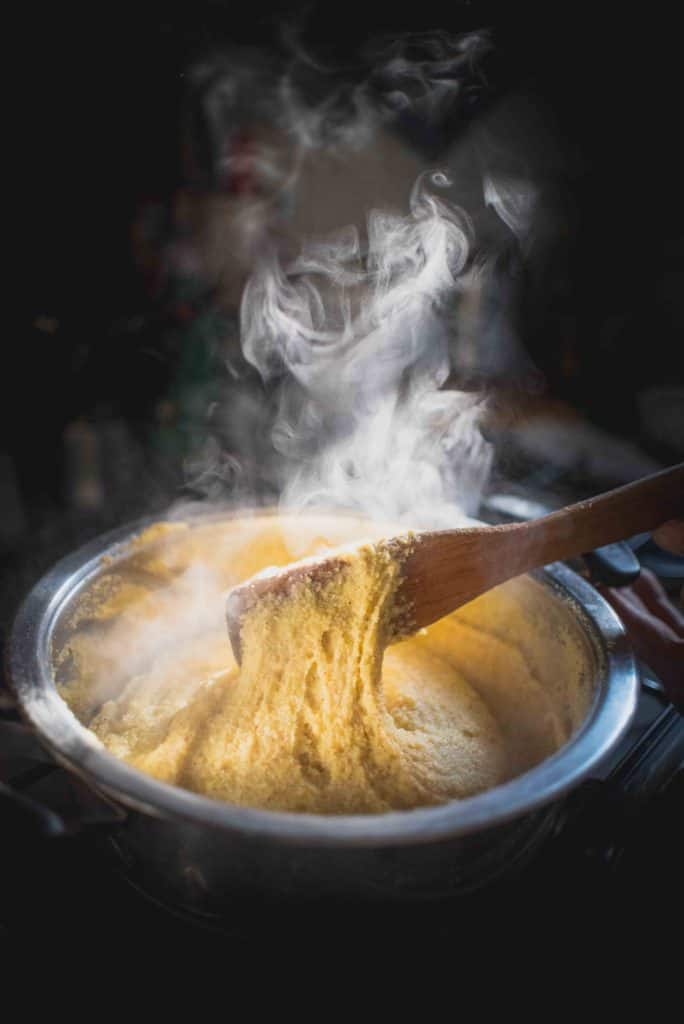
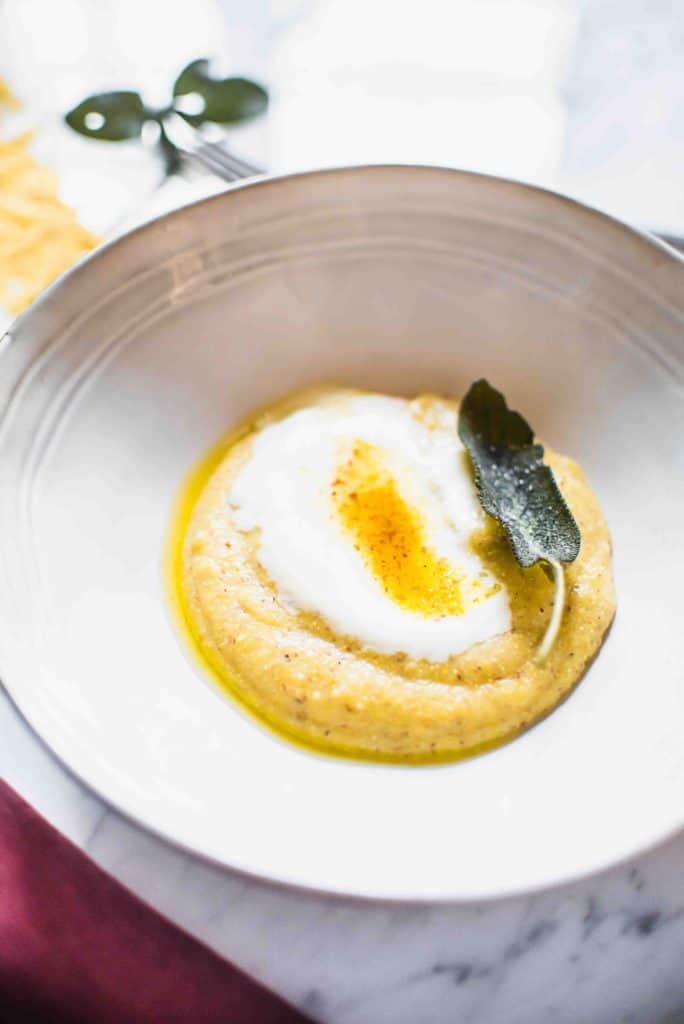
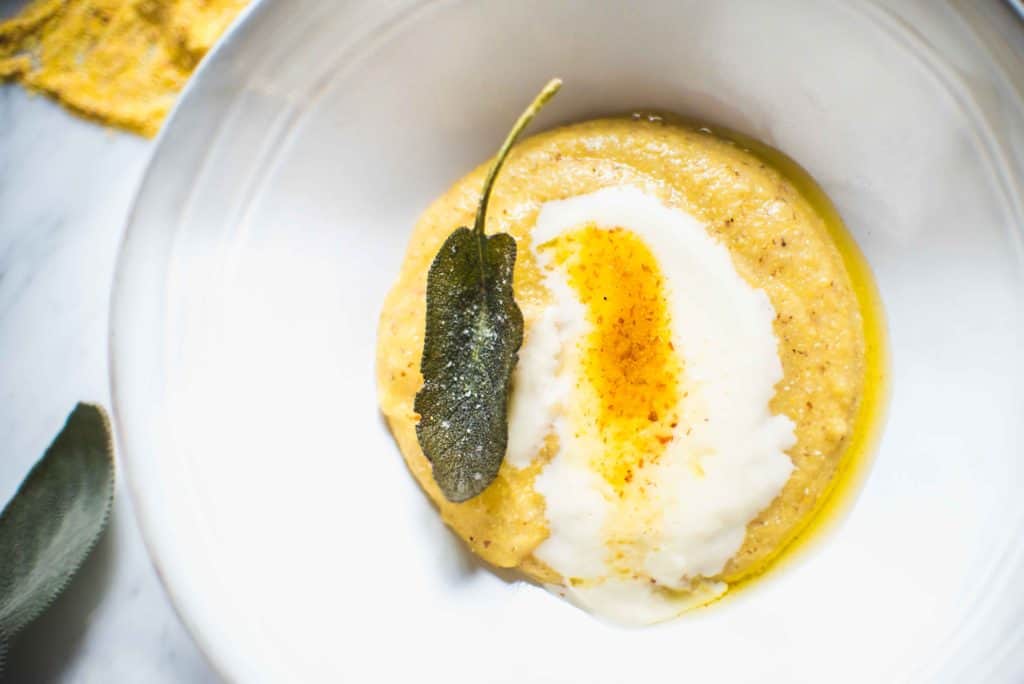

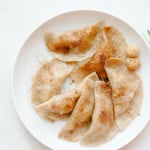
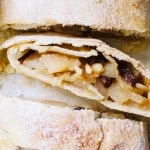


Leave a Reply